25 Legendary Lost Treasures That Still Haven't Been Found (26 Photos)
Over the centuries, a huge number of priceless treasures and masterpieces have disappeared from the historical record. Such artifacts often disappear as a result of theft or disappear under mysterious circumstances during a war or natural disaster. Sometimes they “resurface” years and centuries later, and sometimes they do not emerge at all. 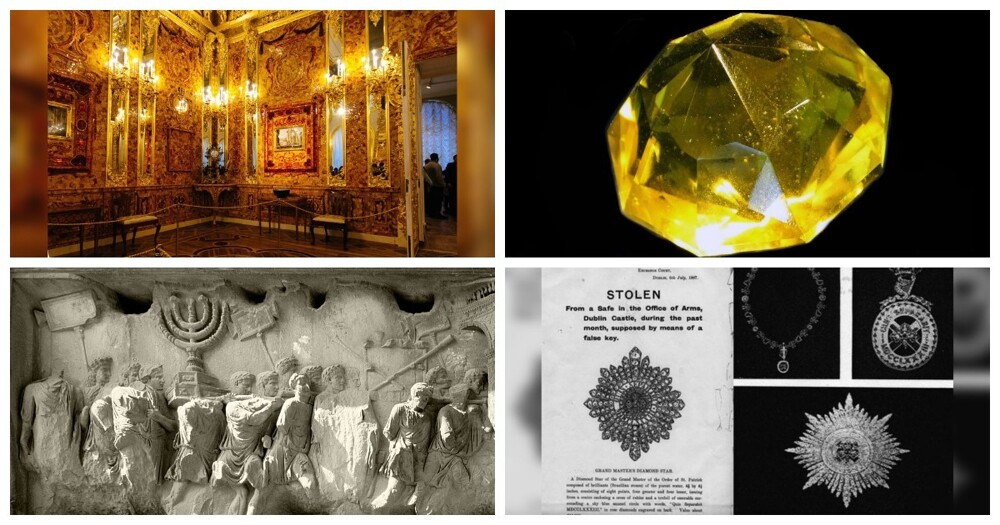
1. Stolen Aztec Treasures 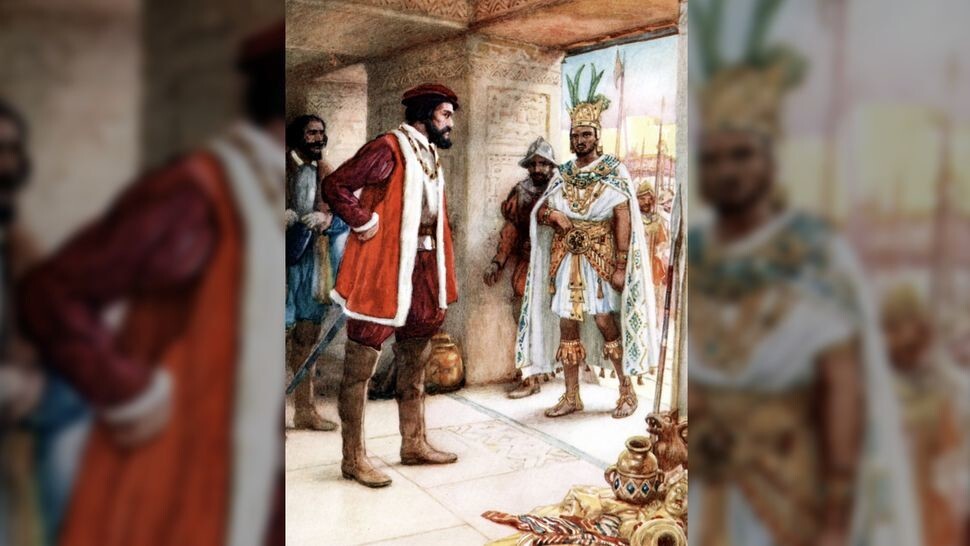
Fernando Cortez with Aztec Emperor Montezuma II
At the beginning of the 16th century, the Aztec Empire in Mexico, ruled by Montezuma, flourished. But in 1519, Spanish conquistadors led by Cortes arrived there. Montezuma became a puppet ruler and died in 1520 under unclear circumstances. In the face of an Aztec rebellion, Cortés and his troops attempted to sneak out of the Aztec capital of Tenochtitlan under the cover of darkness on June 30, 1520, with a huge cargo of Aztec gold. But one of their ships sank in a dry canal that flowed into Lake Texcoco, resulting in the death of many Spaniards and the loss of some of the gold.
This night is called "La Noche Triste", or "Night of Sorrow". The Spaniards returned a few months later to recover the sunken gold, but they only managed to find part of it. A construction worker recently unearthed a centuries-old gold bar in Mexico City, the site of the ancient Aztec capital. But most of the gold has not yet been found.
2. Amber room 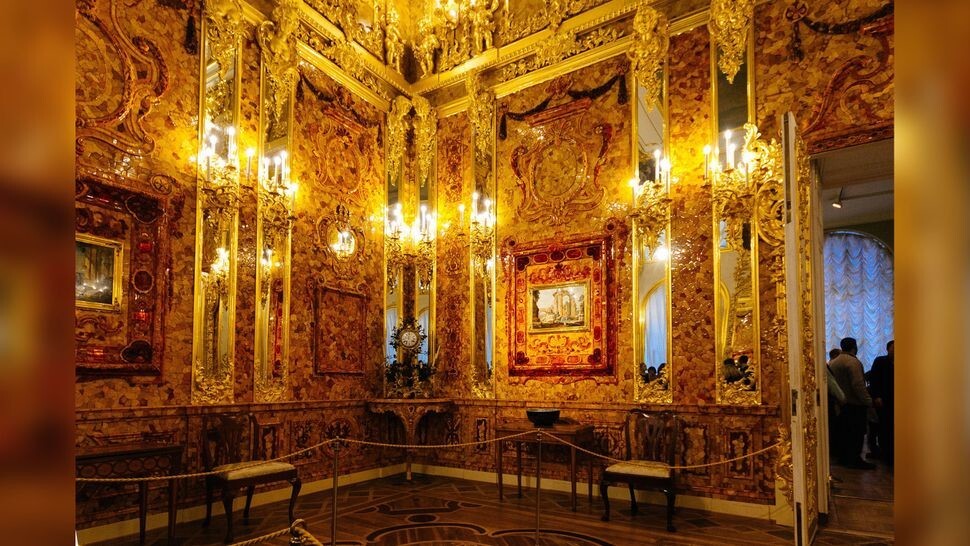
Amber room in St. Petersburg, Russia
The Amber Room was built in the 18th century in the Catherine Palace in Tsarskoye Selo near St. Petersburg. The room contained gilded mosaics, mirrors and carvings, as well as panels made from amber weighing approximately 450 kg. In 1941, the Germans dismantled and took the Amber Room from captured Tsarskoe Selo to Germany. They have not been seen since and may now have been destroyed. Today in the Catherine Palace there is a recreated Amber Room.
3. Sarcophagus of Menkaure 
Antique illustration depicting the sarcophagus of Menkaure on the Giza plateau in Egypt
The pyramid of the Egyptian pharaoh Menkaure is the smallest of the three pyramids built at Giza about 4,500 years ago. In the 1830s, English military officer Howard Wise explored the Pyramids of Giza, at times using destructive methods (most famously the use of explosives) to blast his way through the structures.
Wise made a number of discoveries at Giza, including the discovery of an ornate sarcophagus in the Pyramid of Menkaure. In 1838, Wise attempted to smuggle the sarcophagus to England aboard the merchant ship Beatrice, but the ship sank during the voyage, taking the valuable artifact with it. If the ship is ever found, there is a chance that Menkaure's sarcophagus will be returned.
4. Ark of the Covenant 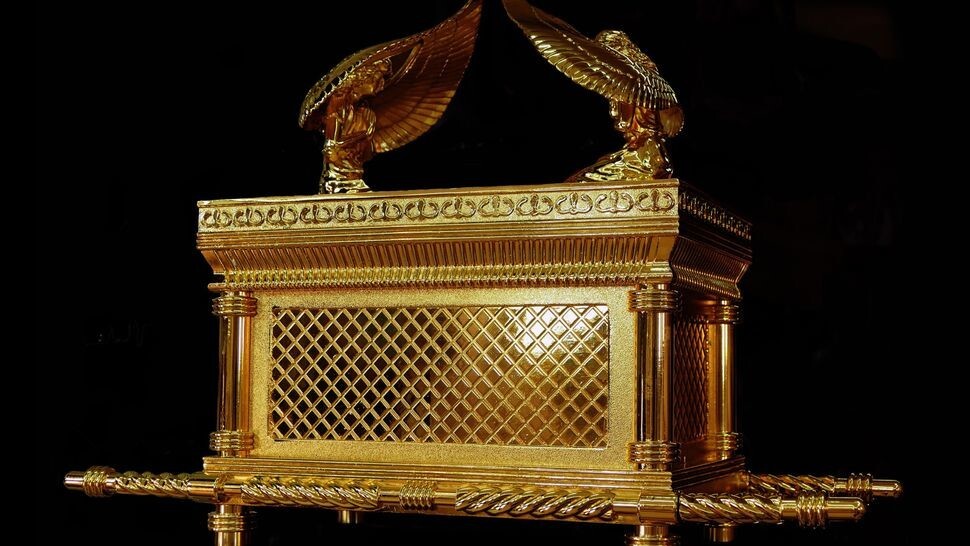
Illustration of the Ark of the Covenant from an 1883 Victorian book
According to the Hebrew Bible (Tanakh), the Ark of the Covenant was a casket that contained tablets with the 10 Commandments engraved on them. The chest was kept in the Jerusalem Temple in ancient Israel, which, according to legend, was built by King Solomon. This temple, sometimes called the First Temple, was the holiest site on Earth for the Jewish people, but it was destroyed in 587 BC. e., when an army from ancient Babylon led by King Nebuchadnezzar II conquered Jerusalem and plundered the city. It is unknown what happened to the Ark of the Covenant, and its location has long been a source of speculation.
5. Sword of Honjo Masamune 
Sword Master Masamune, antique portrait
Honjo Masamune is a sword believed to have been created by Goro Nyudo Masamune, who lived from 1264 to 1343 and is considered the greatest sword maker in Japanese history. The sword is named after one of its owners, Honjo Shigenaga, who received it as a prize after a battle in the 16th century. The sword later came into the possession of Tokugawa Ieyasu, who became the first shogun of Japan after winning a series of wars in the 16th century.
The sword was passed down from generation to generation until after World War II, when during the American occupation of Japan it was given to American authorities who feared that this sword and others like it mightbe used against the Americans. From that moment on he disappeared. Perhaps American soldiers destroyed the sword along with other captured Japanese weapons, or perhaps they brought it to America, and then there is still a chance that it will appear somewhere.
6. The Lost Library of Ivan the Terrible 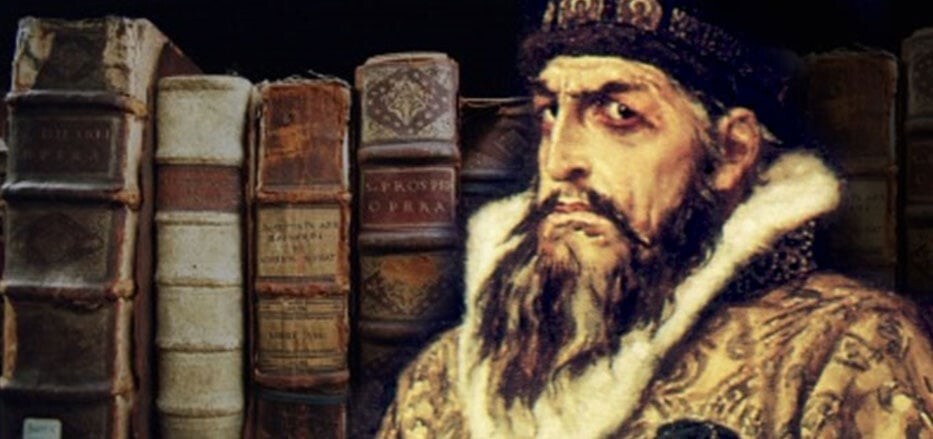
The library of the Moscow kings is said to have contained an extensive collection of ancient Greek texts, as well as texts written in many other languages. The rulers of the Grand Duchy of Moscow allegedly built a library by 1518, and in the 16th century, Prince Andrei Kurbsky wrote about a meeting between the philosopher Maxim (1475-1556) and the Grand Duke of Moscow Vasily III (1479-1533), during which the Grand Duke showed Maxim a huge number of Greek books.
There are claims that Ivan IV, better known as Ivan the Terrible (1530-1584), somehow hid the library's texts. Over the centuries, many attempts have been made to find this library (Liberea), but they have not been successful. Regardless of whether Liberea existed, the archives of Moscow and St. Petersburg contain many ancient texts written in Greek and other languages.
7. Irish Crown Jewels 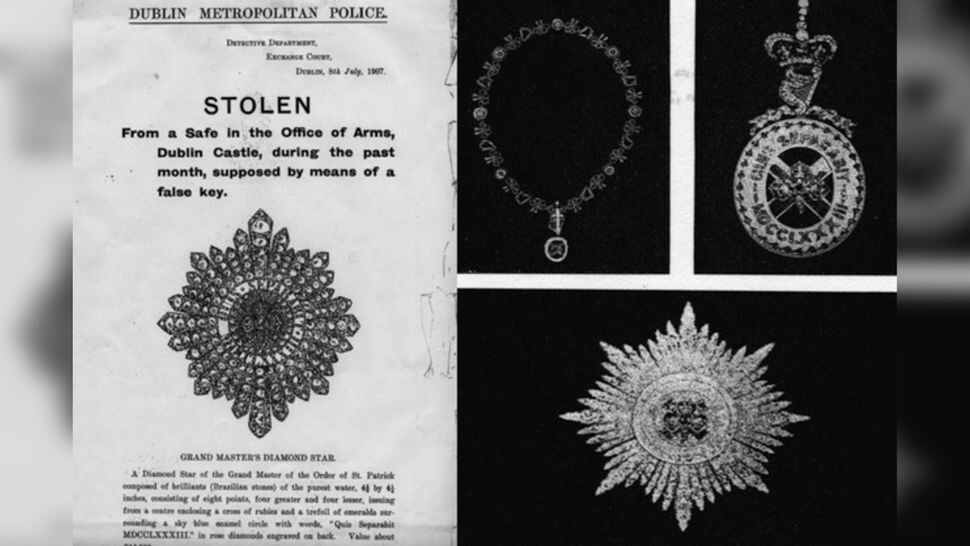
Police leaflet showing the Irish Crown Jewels stolen from a safe in Dublin Castle
The jewels stolen from Dublin Castle in 1907 were not associated with any coronation ceremony. These were the precious star of the Order of St. Patrick, a diamond brooch and five gold necklaces. The Order of St. Patrick was founded in 1783 to honor individuals holding high positions in Ireland and Irish peers.
In 1783, when the Crown Jewels were created, Ireland was controlled by Great Britain. The jewelry was made from 394 stones taken from the jewels of Queen Charlotte, wife of King George III, and was kept in the library. Lax security is blamed for the robbery being possible. Who stole the jewels and what happened to them afterwards remains a mystery.
8. Treasures of a Dead Bishop 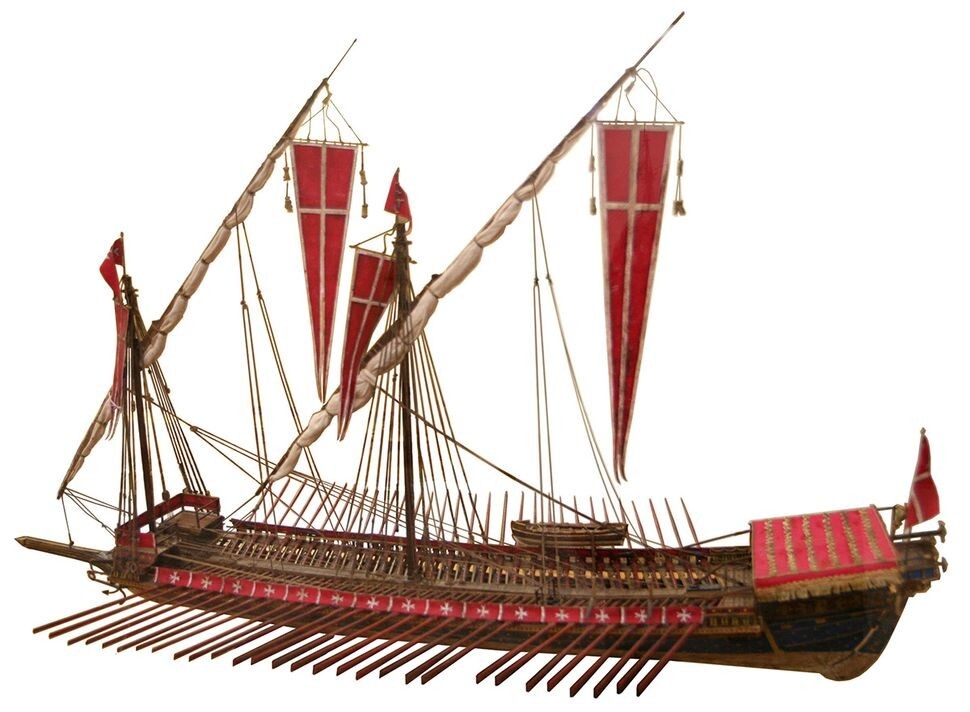
In 1357, a ship called the São Vicente sailed from Lisbon (Portugal) to Avignon (France) with treasures belonging to Thibault de Castillon, the bishop of Lisbon, who had recently died. The treasures included gold, silver, rings, tapestries, jewelry, elegant plates, and even portable altars. Near the city of Cartagena, on the territory of modern Spain, the San Vicente was attacked by two well-armed pirate ships, whose crew captured treasure.
One of the pirate ships was captured after it ran aground. However, the other one appears to have escaped. What happened to this pirate ship's captain, crew, and stolen treasure is unknown.
9. "Righteous Judges" 
"The Righteous Judges" is one of the 24 panels of the Ghent Altarpiece, which is also known as the "Adoration of the Mystic Lamb"
The Just Judges panel is part of the Ghent Altarpiece, a 15th-century work of art painted by Hubert and Jan van Eyck in the Cathedral of St. Bavo in Ghent, Belgium. The panel depicts several characters, whose identities are not clearly established, riding horses. Probably one of the characters is Philip the Good, who was Duke of Burgundy at the time the altar image was created. The panel was stolen in 1934 and has not yet been found.
10. Florentine Diamond 
Glass replica of the yellow Florentine Diamond, a lost diamond of Indian origin
The 137-carat yellow Florentine diamond was probably brought from India and reached Europe at the end of the 15th century. How and when it came to Europe is a controversial issue. According to one version, Charles the Bold, who was Duke of Burgundy in 1467-1477, cut it from a larger diamond and was so fascinated by the Florentine diamond that he even carried it with him into battle and was allegedly killed with it.
After World War I, the last Emperor of Austria-Hungary, Charles I, fled with it to Switzerland, where he put it in a bank vault and entrusted it to an Austrian lawyer named Bruno Steiner, who would help the deposed royal family sell the diamond and other royal jewels, writes historian Gordon Brooke-Shepard in The Uncrowned Emperor: The Life and Times of Otto von Habsburg (Bloomsbury, 2007). It's unclear what happened next. It is known that in 1924 Steiner was arrested, accused of fraud and acquitted. It is possible that the Florentine Diamond was recut and is now a series of smaller diamonds.
11. Menorah from the Second Temple 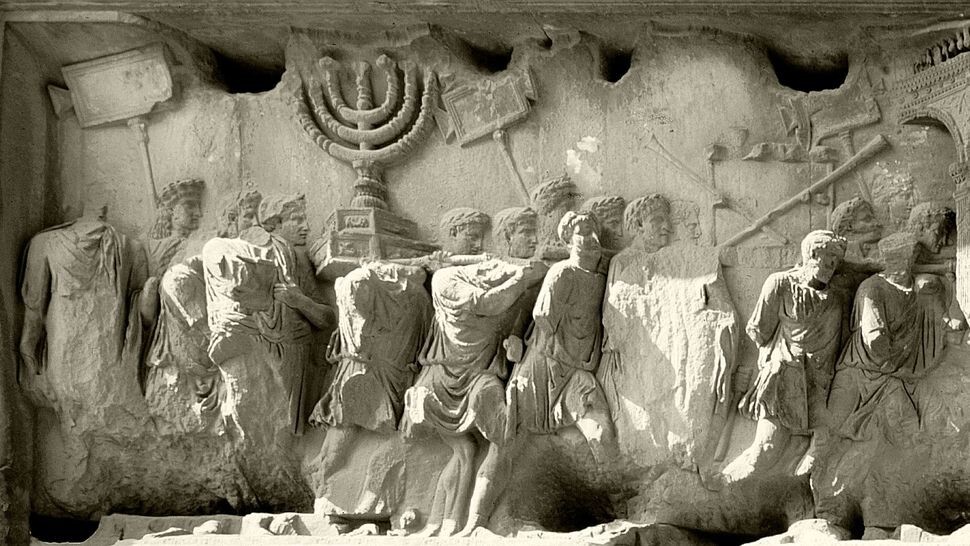
Roman Forum - relief from the Arch of Titus depicting the triumphal procession after the destruction of Jerusalem in 70 AD.
From about 66 to 74. n. e. Jewish rebels fought against the Roman army in an attempt to free Israel from the control of the Roman Empire. In 70 AD e. The rebels suffered a decisive defeat: Jerusalem was captured by Roman troops under the command of Titus, a general who later became Roman emperor. The Second Temple, at that time the most important religious site for the Jewish people, was destroyed, and the Roman army took its treasures to Ancient Rome. Among these treasures was the temple menorah - a lamp with six branches.
The Arch of Titus, located next to the Colosseum in Rome, includes a scene depicting the carrying of a menorah to Rome; in this scene, the menorah appears as a massive object, almost as large as the soldiers carrying it. The fate of the menorah after its arrival in Rome is unclear.
12. Treasures of the Copper Scroll 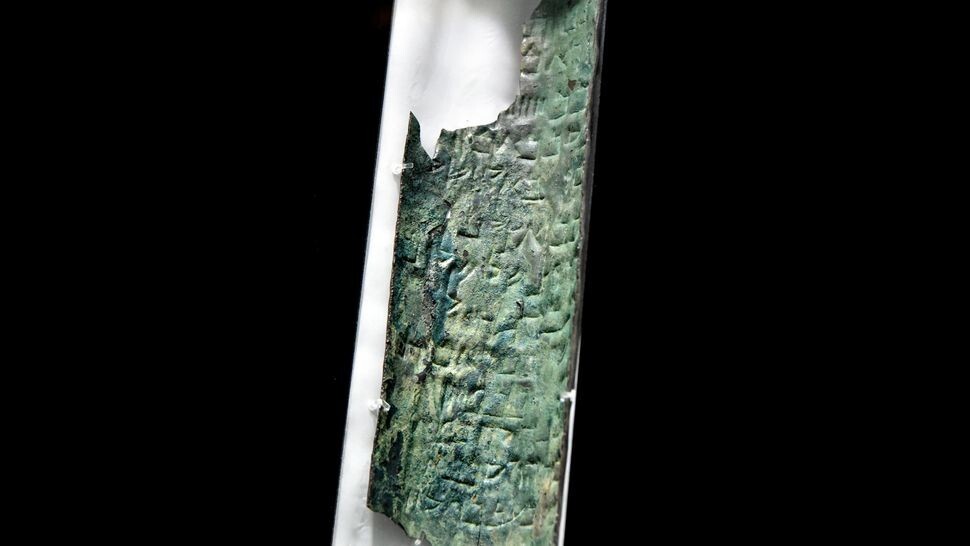
Band 11, part of the Dead Sea Copper Scroll
Perhaps the most unusual Dead Sea Scroll, discovered in the Qumran Caves on the West Bank, is text engraved on a sheet of copper that reveals the location of a huge and valuable treasure. This copper scroll, as it is called, is in a museum in Jordan. Whether the scroll's ancient author was describing real or legendary treasures is a matter of debate among scholars. At the time the scroll was written, around 70 AD. e., the Roman army defeated Jewish troops who rebelled against Roman rule; The Roman army took Jerusalem and destroyed the Second Temple.
Some scholars suggest that the treasures mentioned in the Copper Scroll may be real treasures hidden before the Roman army destroyed the temple. Other scholars argue that the volume of treasure spoken of in the Copper Scroll is so great that it is more like a legend.
13. Paintings stolen from the Isabella Stewart Gardner Museum 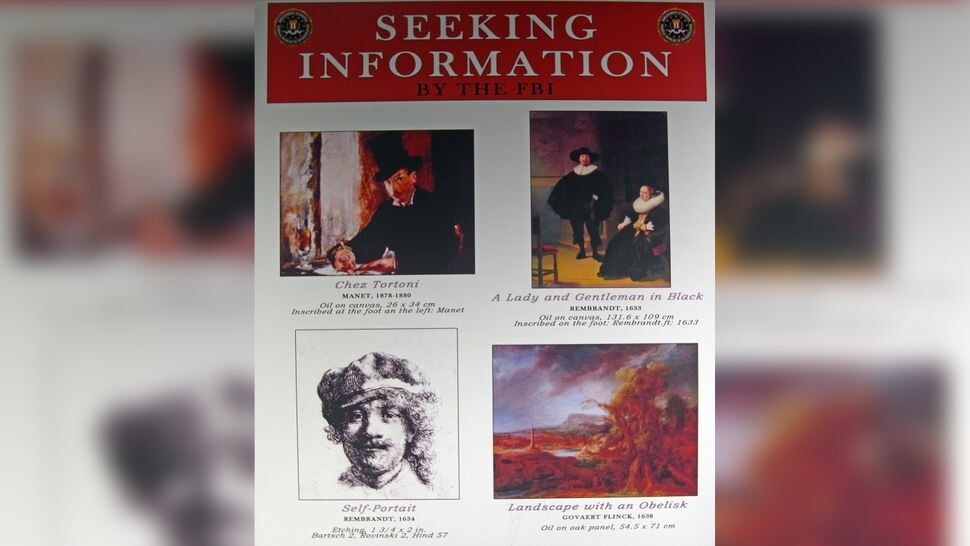
"Seeking Information" poster at an FBI press conference on the Isabella Stewart Gardner Museum robbery investigation, March 15, 2013
On March 18, 1990, two thieves dressed as police officers entered the Isabella Stewart Gardner Museum in Boston, Massachusetts, and stole 13 works of art valued at approximately $500 million. Among them were three works by the Dutch artist Rembrandt and five works by the French artist Edgar Degas.
The identities of the thieves are still unknown, and the works of art have not been found. Perhaps the thieves are already dead, and the paintings are badly damaged or destroyed. Despite the high value of these works of art, they are not easy to sell because they are well known and any buyer can easily determine that they were stolen and end up facing criminal prosecution themselves.
14. Peking Man 
Peking Man Skull
In 1923, fossils of a hominid sometimes called Beijing Homo erectus (a species of Homo erectus) who lived between 200,000 and 750,000 years ago were discovered in a cave near the village of Zhoukoudian, near Beijing.
The fossils disappeared in 1941 during the Japanese invasion of China, and their whereabouts today are unknown. Some scientists speculate that the fossils were lost at sea during transport to the United States; others believe they may be under a parking lot in China.
15. Q-source 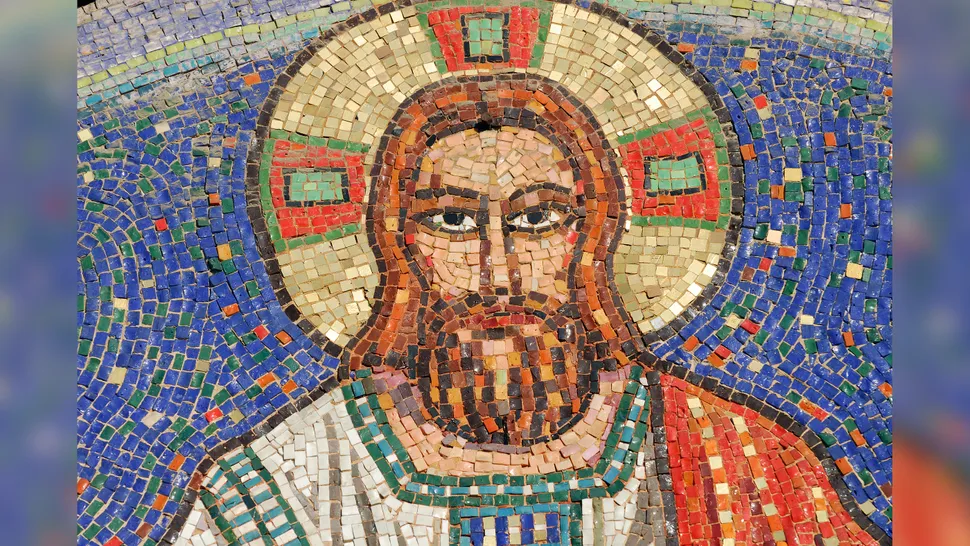
Mosaic depicting Jesus Christ
Source Q, as modern scholars call it, is a hypothetical text from the first century AD containing a number of sayings attributed to Jesus. If it existed, scholars believe that Source Q was used by ancient authors to create the Gospels of Matthew and Luke. The existence of Source Q is based in part on the fact that several passages in the Gospels of Matthew and Luke are identical.
Although the Gospel of Mark is considered the source for the Gospels of Matthew and Luke, some passages included in the Gospel of Matthew and Luke are missing from the Gospel of March. Some scholars believe that these passages come from another source, which they call the Q-source. (“Q” stands for “quelle,” which is German for “source.”) The problem is that no copy of the Q source, if it actually existed, has survived. Some recent research suggests that the Gospel of Marcion, a non-canonical text from the second century, may also contain parts of this Q-source.
16. Nazi gold 
Lake Toplitz in a dense mountain forest high in the Austrian Alps
According to legend, at the end of World War II, Nazi troops led by SS officer Ernst Kaltenbrunner hid a huge amount of gold in Austria's Lake Toplitz to prevent it from reaching the advancing Allied forces. Since then, many search operations have been carried out, but the gold treasure has never been found.
Perhaps this story is just a legend, and in fact there was no gold in the lake; however, some researchers note that the lake has poor visibility and a large amount of logs and debris, making attempts to find gold difficult and dangerous.
17. Lost painting by Raphael 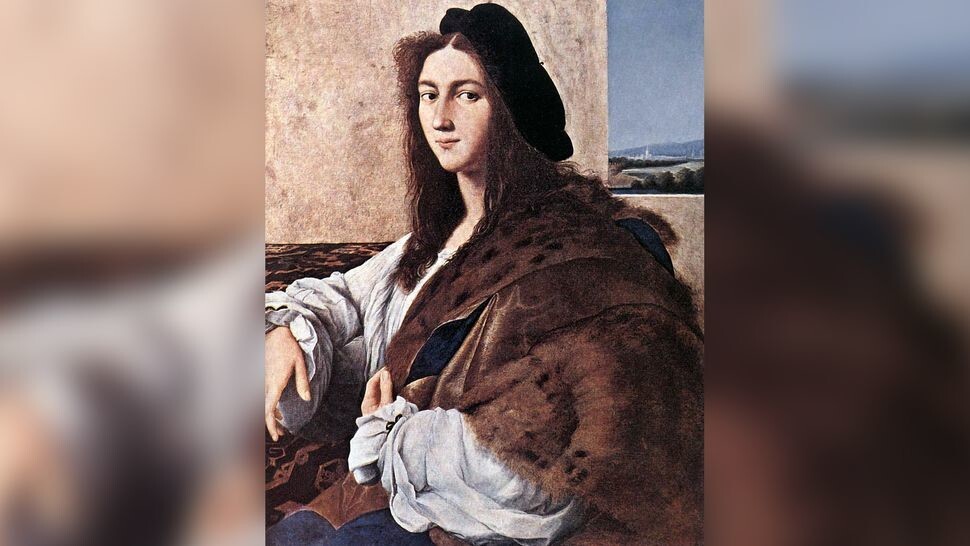
Raphael's painting "Portrait of a Young Man"
Italian artist Raphael Santi, often referred to simply as Raphael, who lived from 1483 to 1520, painted this striking Portrait of a Young Man. The identity of the person depicted in the painting and the exact date when Raphael created it are unknown. The painting belonged to the Czartoryski Museum in Krakow, Poland, in September 1939, when the German army invaded Poland. Nazi officials took possession of the painting, intending to display it in the future Führermuseum in Linz, Austria.
The Führermuseum was never built, and the painting was last seen in January 1945 at Hans Frank's chalet in Neuhaus on Lake Schliersee (Germany). Frank was a Nazi official in occupied Poland responsible for numerous war crimes. After the war, he was put on trial, sentenced to death and executed. But Raphael's painting was never found.
18. Royal box 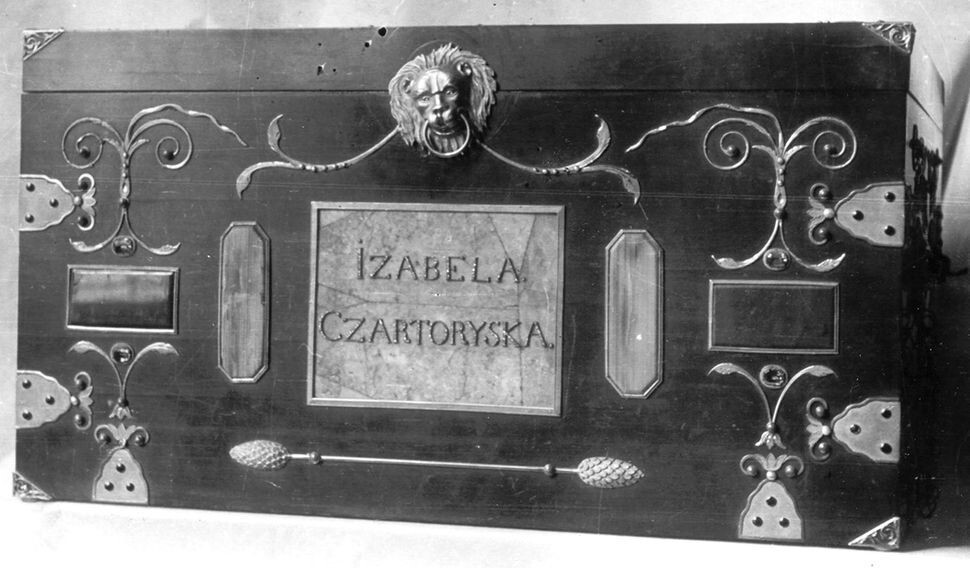
In 1800, Polish princess Isabela Czartoryska collected the so-called royal box - a collection of artifacts that belonged to the royal families that ruled the country. These artifacts included jewelry worn by the kings of Poland, works of art, and other memorabilia. Poland ceased to exist as an independent state in 1795, having been divided among various powers in the region. And the royal box eventually fell victim to another group of invaders - it was captured by Nazi Germany after the invasion of Poland in September 1939. The contents of the box have been lost.
19. "Love's Labour's Reward" by Shakespeare 
It is known that William Shakespeare wrote the play "Love's Labour's Won" ("Love's Labour's Lost"), although no copies have survived to this day. It may be a continuation of the comedy "Love's Labour's Lost" written by Shakespeare in the 1590s. Documents from the 1590s and 1600s indicate that the play "Love's Labour's Won" was published by 1598 and was still being sold in 1603, although no surviving copy has been found. writes William Carroll, a professor at Boston University, in the foreword to the reissue of Love's Labor's Lost (Cambridge University Press, 2009).
Some scholars believe that the recordings of Love's Labour's Reward refer to another Shakespeare play called Much Ado About Nothing, which is well known and performed to this day. One Royal Shakespeare Company production even renamed the play (which can be seen on YouTube) Much Ado About Nothing to Love's Labour's Rewarded based on this theory.
20. Faun mask by Michelangelo 
This marble "Mask of a Faun" is attributed to the Italian artist Michelangelo di Lodovico Buonarroti Simoni, who lived from 1475 to 1564. The mask belonged to the Bargello Museum in Florence, but in 1944 it was stolen from the Castello di Poppi, located in Tuscany.
Who stole? Soldiers from the 305th Division of the German Army, which was part of the German 10th Army. Soldiers stole the mask between August 22 and 23, 1944 and placed it in a cargoVic. The last time the truck containing this and other works of art was seen on August 31 in Italy. And then he disappeared into the water.
21. "The Nativity" by Caravaggio 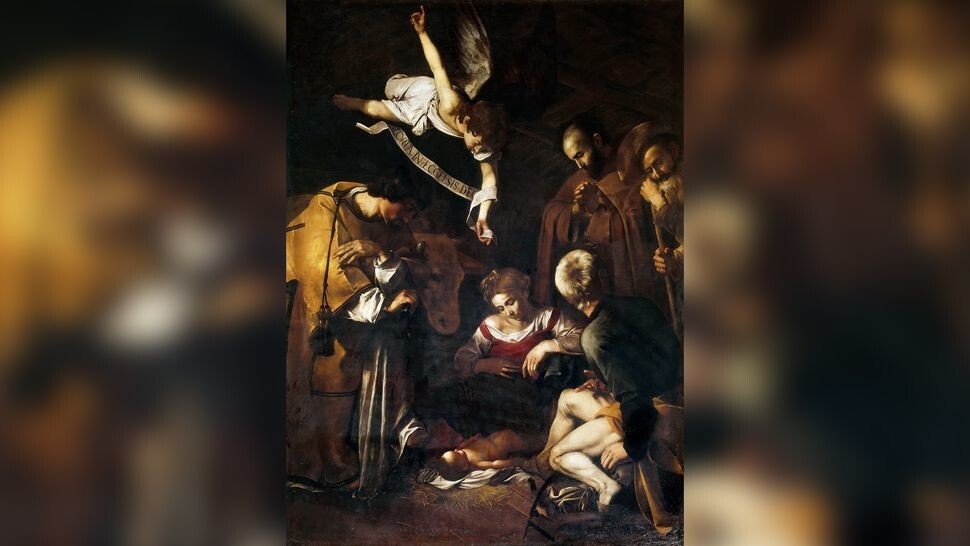
"Nativity of Christ with Saint Francis and Saint Lawrence", 1609, found in the collection of San Lorenzo, Palermo
The painting "Nativity with Saint Francis and Saint Lawrence" was created in 1609 by the Italian artist Michelangelo Merisi da Caravaggio, who lived from 1571 to 1610. The painting depicts the birth of Christ, with the baby Jesus lying on a haystack - a scene which, according to scholars, emphasizes the poverty of his birth.
The painting was stolen in 1969 while it was in a chapel in Palermo, Sicily, Italy. The painting has not yet been found and it is unclear who stole it. For a long time it was assumed that this was done by members of the Sicilian mafia. In 2015, a reproduction of the painting was unveiled in the chapel from which the original was stolen.
22. Missing Faberge Easter eggs that belonged to the Romanovs 
Faberge egg given by Nicholas II to his mother, the Dowager Empress Maria, for Easter in 1899
From 1885 to 1916, the Fabergé jewelry company, then run by Russian jeweler Peter Carl Fabergé, made ornate Easter eggs for the Russian imperial family.
These eggs “represent the crowning achievement of the famous jewelery house and should be considered the last great commissions of art,” says Fabergé on its website. "Ten eggs were created from 1885 to 1893, during the reign of Emperor Alexander III; another 40 were created during the reign of his son Nicholas II, two per year, one for his dowager mother, the second for his wife."
The 1917 revolution led to the execution of Nicholas II and most of the Romanov family. After their death, some of the eggs disappeared and have not yet been found; some are rumored to be in private collections around the world. It is possible that some of them are now in the United States - documents have emerged indicating that at the end of the Cold War, shipments of antiques and artifacts worth about $164 million were sent from the Soviet Union to the United States.
23. Jules Rimet Cup 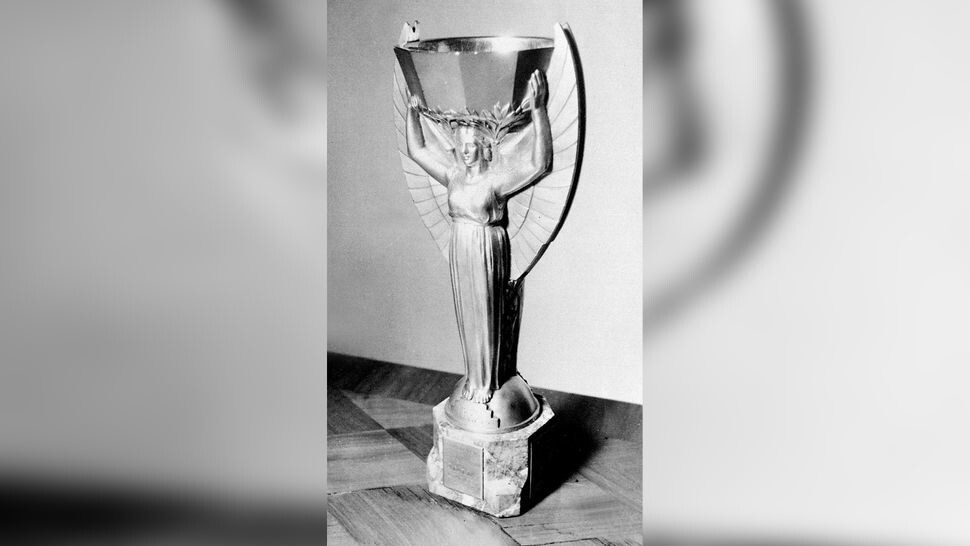
The Jules Rimet Trophy is a prize awarded to the winning team of the FIFA World Cup. The trophy, named after Jules Rimet, founder of the World Cup, was sculpted by Abel Lafleur and depicted the goddess of victory holding above her head an octagonal vessel made of gold with a base of semi-precious stones.
The trophy was first awarded in 1930 at the first World Cup and passed from winner to winner every four years, but in 1970 Brazil won the competition for the third time. According to FIFA rules, the first team to win the World Cup three times will receive permanent ownership of the Jules Rimet Trophy. So the cup was sent to Brazil and a new World Cup trophy was created.
In 1983, the cup was stolen in Rio de Janeiro and has not been seen since. The thieves may have melted down the cup, which was made mostly of gold and weighed about 6.1 kilograms.
This is not the first time the Jules Rimet Cup has been stolen. In 1966, the trophy was stolen from a Methodist hall in London. The trophy was found a week later when it was discovered by a dog named Pickles and his owner David Corbett, who found it lying on a south London street, wrapped in newspaper and twine. The thief or thieves who committed this robbery were never found.
24. "Leda and the Swan" by Michelangelo 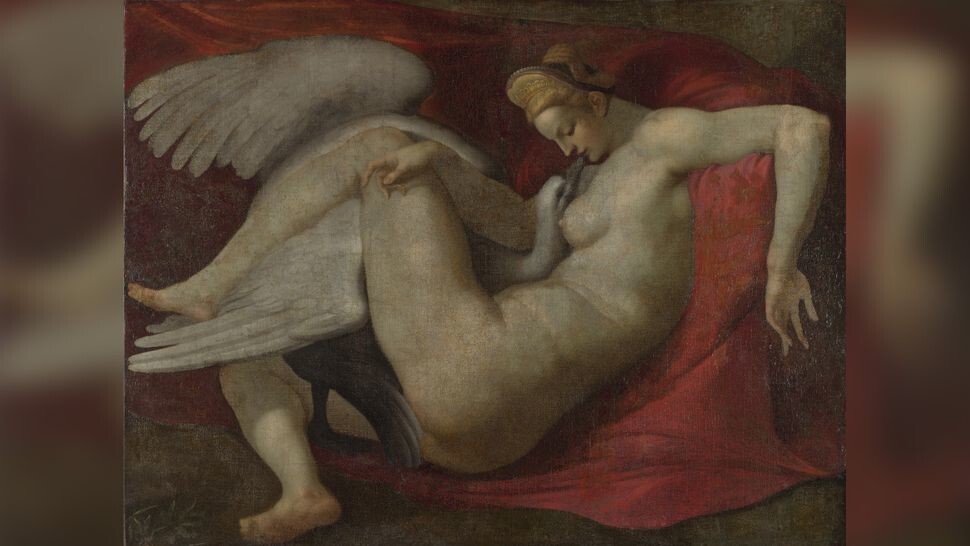
Michelangelo's painting "Leda and the Swan" depicts a scene from ancient mythology in which the god Jupiter, taking the form of a swan, seduces Leda, the queen of Sparta. According to myth, Helen of Troy was one of their offspring. The original painting by Michelangelo has been lost; only a small number of copies made by other people have survived.
Copies show that Michelangelo's painting was very erotic: a completely naked Leda has sex with Jupiter, who is depicted as a swan. It is unknown how exactly Michelangelo's painting went missing, but it is likely that someone found its erotic nature too strong and at some point it was destroyed.
25. Film "The Life of General Villa" 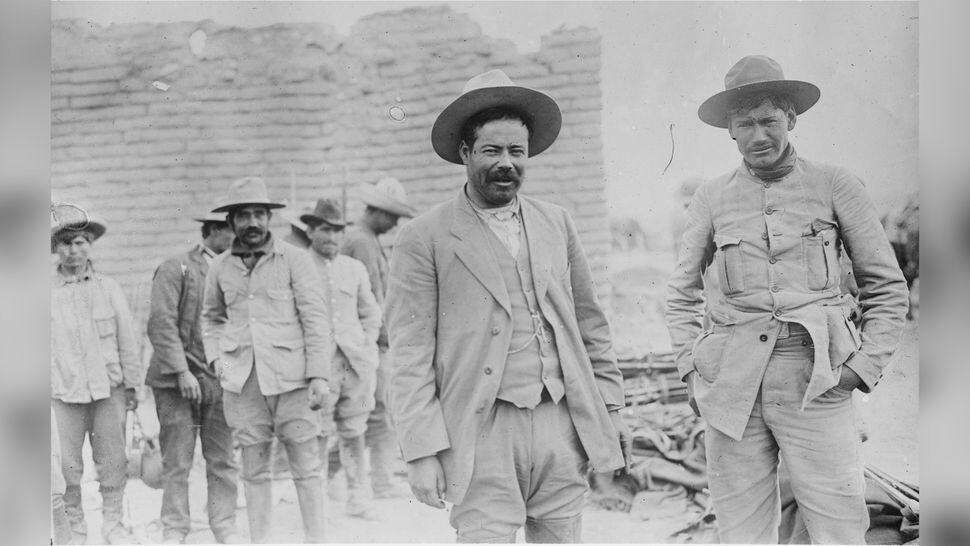
General Francisco "Pancho" Villa (1878-1923)about the time of the Mexican Revolution
The Life of General Villa is a lost film about the Mexican revolutionary general Francisco "Pancho" Villa (1878-1923), who fought a series of battles against the leaders of Mexico. Although the film was heavily fictionalized, it included footage of real battles in which Villa's troops participated. Villa himself signed a contract with Mutual Film Corporation (the film's creator) that allowed filmmakers to film him and the actual battles fought by his troops in exchange for a share of the film's proceeds. Although the film was released and shown to the public, it is now lost.
Soon after the film's release, Villa became an enemy of the United States when his troops crossed into New Mexico and killed several Americans. An American military expedition to Mexico in 1916 failed to track him down, although an attempt was made on his life in 1923, possibly ordered by some Mexican leaders.






















